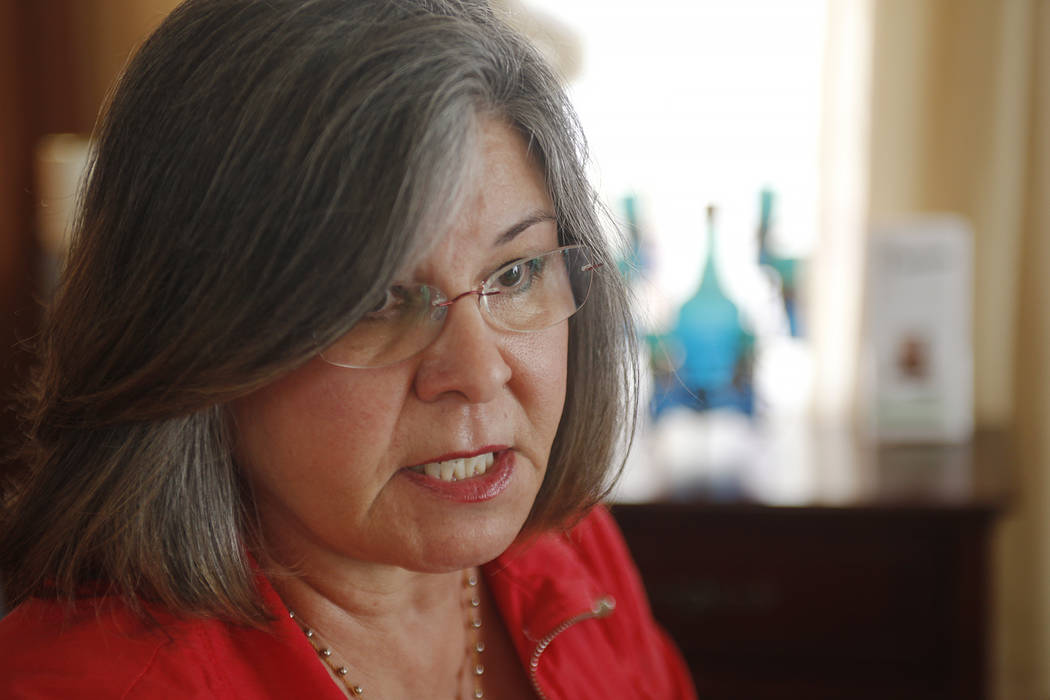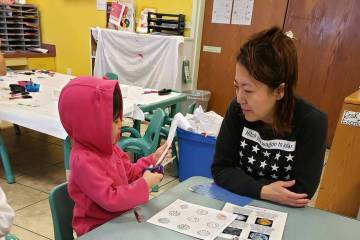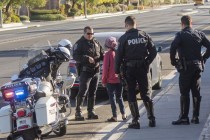A crusade against sexual misconduct in schools
In 1983, Terri Miller heard something that unsettled her: A high school teacher in Pahrump was having sex with one of his students.
She heard it, she said, from the teacher’s wife — who found the two in bed together.
“I knew that I would be raising my family in that small community, so I called the principal the next day and I repeated what she had told me,” Miller said.
More than a decade passed, and Miller kept hitting obstacles in her attempts to get the teacher out of school — so she launched her own investigation. She said she found 60 parents, former students, and other people willing to come forward against the teacher.
That man, Joseph Peterson, was given a life sentence in 1996 for raping a student and was paroled in 2012.
On Tuesday, the Las Vegas Review-Journal launches “Broken Trust,” a three-part series on sexual misconduct between staff members and students in the Clark County School District. What we’ve uncovered is perhaps just as disturbing as Miller’s story.
Why is this still happening? There is no easy answer to that question, but we found contributing factors, including collective bargaining agreements, background check loopholes and inadequate training.
The vast, overwhelming number of teachers are not pedophiles. Eleven arrests of Clark County School District staff members since July, among some 40,000 employees, is a small fraction of the district’s workforce.
But that’s not the issue here.
What we’ve focused on is how those 11 slipped through the cracks, and how a system meant to educate our children can end up hurting them.
“Eleven is a lot,” said Charol Shakeshaft, a professor at Virginia Commonwealth University who specializes in educator sexual misconduct. “It definitely indicates a problem. It may be that the problem’s starting to be solved, because people are being arrested and identified.”
The issue is certainly not unique to Clark County. USA Today conducted a comprehensive nationwide investigation on how teachers with a history of sexual misconduct can pass from state to state.
Yet nationwide, there are few statistics that adequately document the scope of the problem.
A 2004 analysis by Shakeshaft suggested that more than 4.5 million students experience sexual misconduct from a school employee between kindergarten and the 12th grade, based on an American Association of University Women study.
And who knows how many cases aren’t reported by students?
“We don’t have good data and we need good data,” Shakeshaft said. “I keep saying this, but every time I put a proposal in to try to get good data in, it’s seen as not very important.”
Since her battle in Pahrump, Miller — now the president of Stop Educator Sexual Abuse Misconduct and Exploitation (SESAME) — has been fighting for change in Nevada.
She was integral in getting a law forbidding student-teacher relations on the books in 1997. She has pushed from the sidelines to make the law as comprehensive as possible.
“I’ve been taking care of my baby, as I call it,” she said, laughing. “Looking after it and helping it to grow up.”
As you’ll see in our reports, there are a number of potential solutions to the problem. Whether the district, educators and legislators embrace them remains to be seen.
Perhaps most important, it will take people like Terri Miller to effect change on a local level. The active mother runs SESAME from her home, meticulously reviewing all reports of school employee sexual misconduct involving kids.
But she still manages to enjoy the brighter aspects of life, spending her afternoons teaching piano.
“I like to say I end my days on a happy note,” she said.
Contact Amelia Pak-Harvey at apak-harvey@reviewjournal.com or 702-383-4630. Follow @AmeliaPakHarvey on Twitter. On Education appears every other Saturday.
Extent of educator sexual misconduct?
Shakeshaft's 2004 "Synthesis of Existing Literature" report reviewed studies that estimate the percentage of U.S. students subject to sexual misconduct by school staff range from 3.7 to 50.3 percent






















